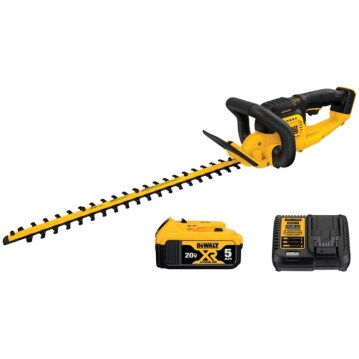
Peperomia is a versatile plant with several species across the world. The plant is quite impressive and, simultaneously, unusually compared to other indoor plants. Unlike most indoor plants, peperomia has several kinds of the same species (plant), and this is why it is quite hard to know the exact number of plants worldwide. However, it is asserted that about one thousand plants are in South America. The reason peperomia is highly versatile is the ability to survive in some regions: tropical, sub-tropical, South America, and North America. In short, peperomia can withstand some conditions and is highly adaptive because of the varying species designed to live in some areas by nature.
For example, peperomia plants have varying values and surviving conditions: epiphytes, lithophytes, xerophytes, and geophytes. The epiphytes need a plant to survive: for support and growth.
Does Peperomia Make a Good House Plant?

Peperomia is a versatile plant and supports most indoor conditions. It is easy to plant because it has many adaptive properties compared to an average indoor plant. Based on the classification, the plant is classified according to its adaptive properties: epiphytes, xerophytes, and geophytes. Peperomia plants come with three main properties for identification purposes: epiphytes – with embellishing foliage, withstand rainfall and water; succulent peperomias – comprises of dry environment delicious peperomias, which are many times found in high altitude; geophytes – these plants have leaves that tumble off in the colder dry season, get by because of their underground tubers, and develop the leaves back in the rainy season.
Browse our Affiliate Products
The adaptive properties have significant roles in the plant and how they survive. There should be another plant preparation for epiphytes peperomia when growing such peperomia. Peperomia does not have watering issues, and the xerophytes survive a longer period without watering. Peperomia is another safe hand for gardeners because if you add it to your collection, it requires low monitoring from you.
As much as the plant is adaptive, it is a beautiful plant to put in the corner of your home. The property of a house plant is to make the home a beautiful place. Peperomia does this with exceeding values because it is beautiful: colors and textures. The plant blends with most interior decorations; even though the plants require the same care, they give varying beautification. Aside from the classification based on their adaptive properties, you can easily use the plant’s appearance and properties to make a notable change within your garden and home.
Based on the need and care, you only need to water the plant when the soil is completely dry. Also, you may not need fertilizer since the plant grows exceedingly well when cultivating it. Peperomia needs bright indirect light. You can place it anywhere in your home; ensure it is not direct sunlight.
For more information on other types of house plants click here: House Plant Category
What other peperomia varieties do well indoors?
- Peperomia obtusifolia – this peperomia is known as the “baby rubber plant.” The plant belongs to the succulent (xerophytes family). It has a tall stem and about 25 – 30 cm. Baby rubber plants are suitable for indoor because they are in a wide assortment of fascinating and one-of-a-kind cultivars, incorporating some with white leaves, dim or brilliant yellow variegation.
- Peperomia argyreia – the plant is also known as “watermelon peperomia.” The plant shape is similar to a watermelon with large and stripes shapes. The leaves are joined to red stems, which develop as a bushy rosette; the plant is a better collection that accommodates more plants in the garden.
- Peperomia clusiifolia – the plant is also called “peperomia jelly.” The leaves are the main deal surrounding a peperomia jelly plant: it has a yellow center color, followed by varieties of other colors like cream at the edges.
- Peperomia orba is also called the “teardrop peperomia.” They can grow wide, twice, they grow tall. The plant has varying colors and can be a bushy plant – this is why it is a better variety as an indoor plant.
- Peperomia caperata – is also known as “emerald ripple peperomia.” The plant is oval and has a pleasing color design: dim red or practically purple tone; different cultivars can go from green to silver-dark with red.
Optimal growing conditions?
Most Peperomia plants ought to be kept in brilliant and indirect sunlight: in temperatures of between 65-80 °F. They ought to be rarely watered once the top inch of soil has dried out, treated throughout the developing season, and pruned in well-depleting fertilized soil.
Peperomia general information and care

- Common Names: Baby rubber plant, pepper elder, radiator plant, shining bush plant, emerald ripper pepper
- Scientific name: Peperomia spp
- Growth cycle: annual
- Sun: Full or partial
- Watering: after the soil dry
- Adult size: 6–12 in. tall, 6–12 in. wide
- Planting zones: 10–12 (USDA) For more information on planting zones click here. USDA Plant Hardiness Zone Map
- Weather hardiness: warm climate
- Propagation: stem cutting
- Toxicity: non-toxic
- Dormancy: summer
- Soil: lightweight and well-drained soil
- Bloom: Summer
- Fertilization: once a month
Final Thoughts
Peperomia is a wonderful plant because of the versatility and easy-to-plant features. The plant has varying adaptive properties that make it withstand some harsh condition, and aside from this, it also contribute to a healthy garden or home collection because some are bushy and epiphytes. All in all, the plant is non-toxic to humans and animals.












